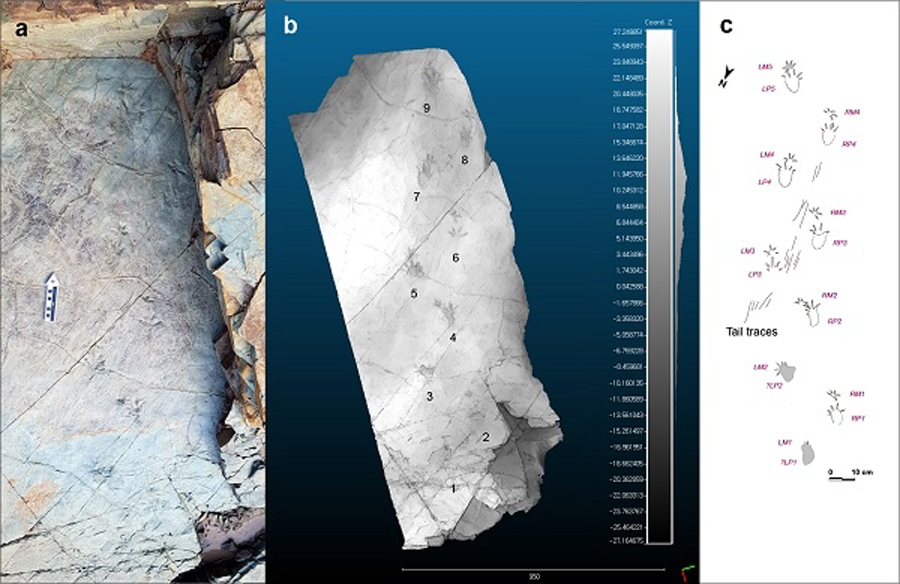Bangudae Area
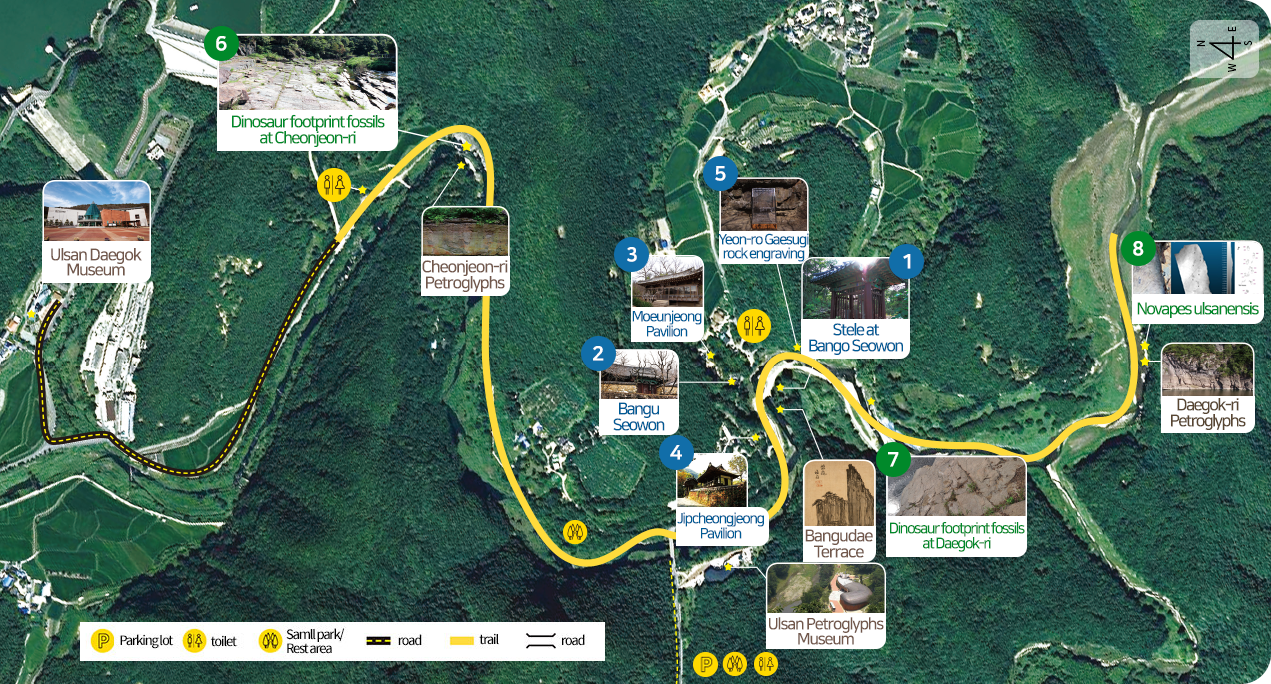
Click on the name of each place to go to the corresponding description.
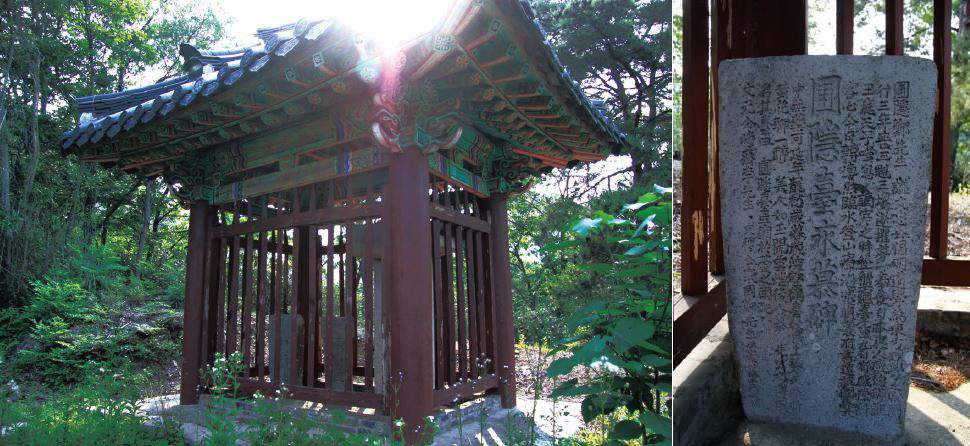
01. Stele for Jeong Mong-Ju at Bango Seowon (Neo-Confucian academy)
The stele was erected in honor of the learning and virtues of Jeong Mong-Ju, who visited Bangudae Terrace toward the end of the Goryeo era. Jeong Mon-Ju is widely considered the founder of the Korean school of Neo-confucianism. During the reign of King Wu of Goryeo (1376), Jeong opposed the King’s foreign policy to establish friendly relations with the Mongol Yuan Dynasty to the exclusion of Ming China, and was banished to Eonyang. Jeong visited Bangudae Terrace where he left behind a short poem. There are actually three stele erected in 1885, 1890 and 1901 by Neo-Confucian scholars of the area to commemorate Jeong. A small protective housing was built over stele, which are designated and protected as Ulsan Metropolitan City Tangible Cultural Property No. 13.
02. Bangu Seowon (Neo-Confucian academy)
The academy was established by local scholars in 1712 (38th year in the reign of King Sukjong of Joseon) in honor of Jeong Mong-Ju from the late Goryeo Dynasty, and the Joseon-era civil officials Yi Eon-Jeok and Jeong Gu. The original academy was lost to a fire in 1728 (fourth year in the reign of King Yeongjo), but was rebuilt the following year. In 1871 (eighth year in the reign of King Gojong), Regent Heungseon Daewongun ordered all Neo-confucian academies to close. The stele in honor of Jeong Mong-Ju and the structure over them were erected in 1900 (29th year in the reign of King Gojong). The academy was moved to its current place in 1967 due to the construction of the Sayeon Dam. A ceremony to commemorate the scholars Jeong, Yi and Jeong is held at the academy in the third lunar month of each year.
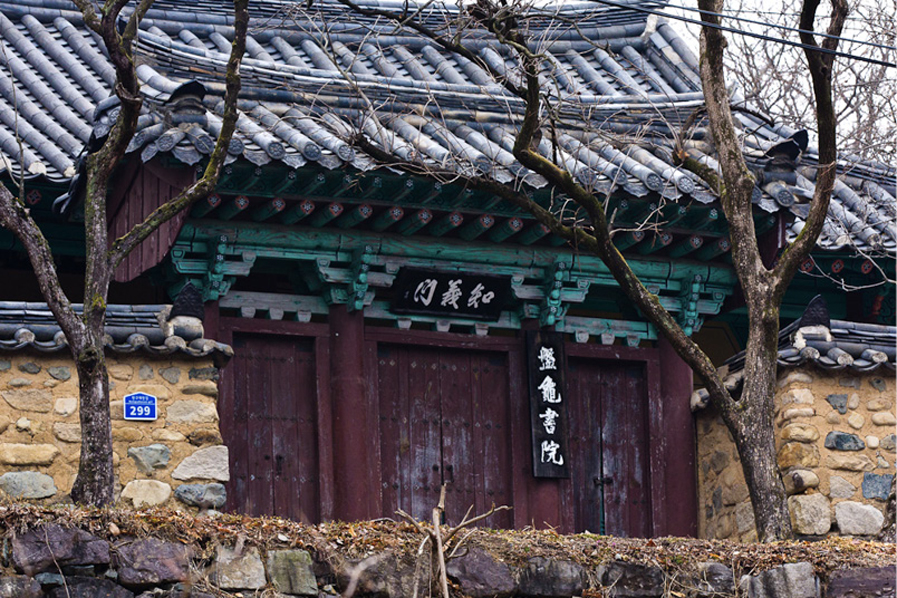
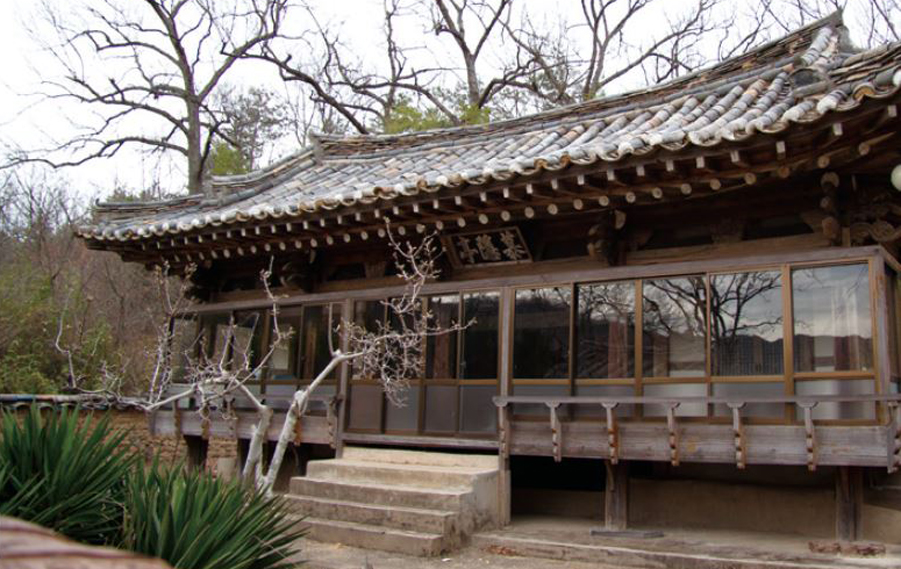
03. Moeunjeong Pavilion
The pavilion, found near the Bangudae Terraces, belongs to the Cheongan Lee clan. Lee Yong-Pil (1848 to 1906) began construction in the late 19th century to commemorate the virtue and learning of Jeong Mong-Ju, but he never saw the structure’s completion. The pavilion was completed in 1920 by his son Lee Jeong-Hyeok and his siblings in 1920.
04. Jipcheongjeong Pavilion
The pavilion was built by Choi Sin-Gi (1673 to 1737), who served as Minister of the Board of War, in 1713 (39th year in the reign of King Sukjong). The area around Bangudae Terrace is famous for its beauty, and has historic significance as well, having been visited by the great scholar Jeong Mong-Ju. Choi Sin-Gi found it unfortunate that the area had become so secluded and hidden away, and proceeded to erect a pavilion across a stream north of the terrace. The pavilion was a place where he could study and enjoy time alone. Choi Sin-Gi is also credited with engraving some of the characters found on the Bangudae rock face.
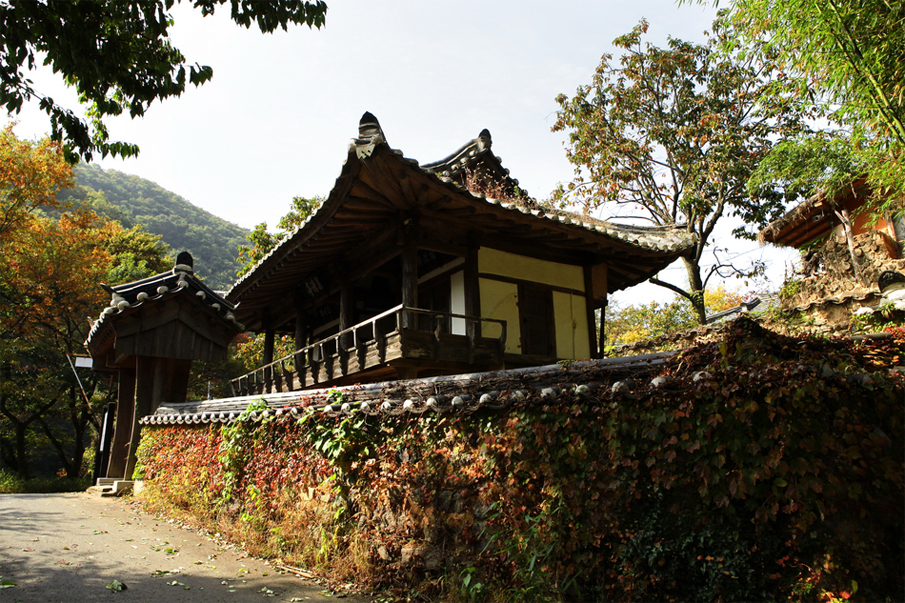
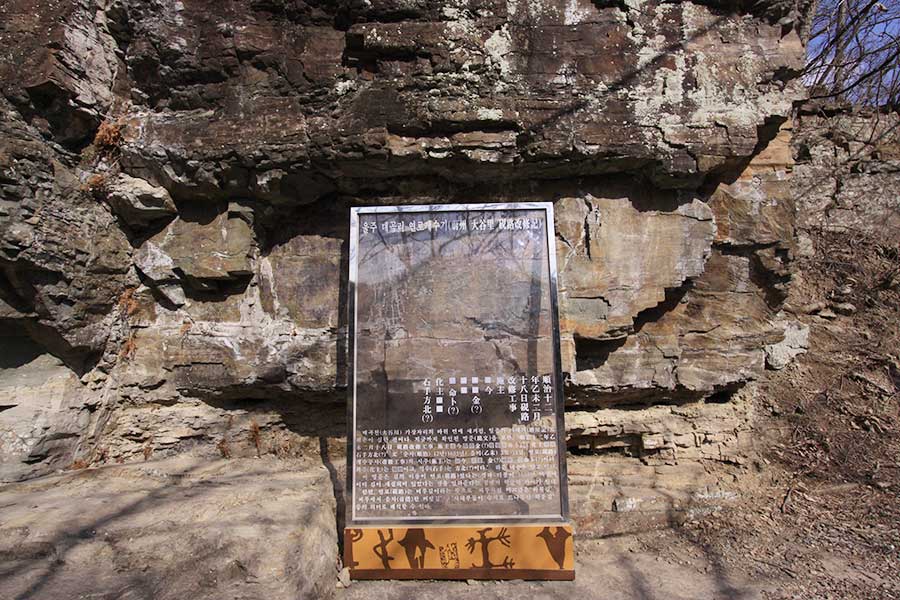
05. Petroglyph of Repairing the Road in Daegok-ri, Ulju
Well-written Petroglyphs, inscribed on the edge of a rock in the Daegok River, states that Yeon-ro (a sharp winding road) was repaired on the 18th of February in 1655 (the year of Sheep), the 12th year of the Shunzhi Emperor, as well as the names of the donors, those who played the main role in the service, and the stonemasons. It holds a high academic value as it states that the name of the road was “Yeon-ro.”
06. Dinosaur Footprint Fossils of Cheonjeon-ri
Cultural Property Materials Number 6 in Ulsan (Designated in 10. 9. 1997)
Dinosaur tracks are important evidence that tells which species of dinosaurs made the track, the creature’s route, activity patterns, and aspects of its life. A wide rock on the opposite side of the rock inscribed in Cheonjeon-ri, has about 130 footprints of Sauropoda and Ornithopoda presumed to have lived in the early Cretaceous period, about 100 million years ago. The tracks by Sauropoda are about 60~80㎝, while those of Ornithopoda are about 24~40㎝. The strata, middle grey colored mudstone hornfels, non-red bed, belongs to the Hayang Group of the Daegu Strata of the Cretaceous Gyeongsang Basin.
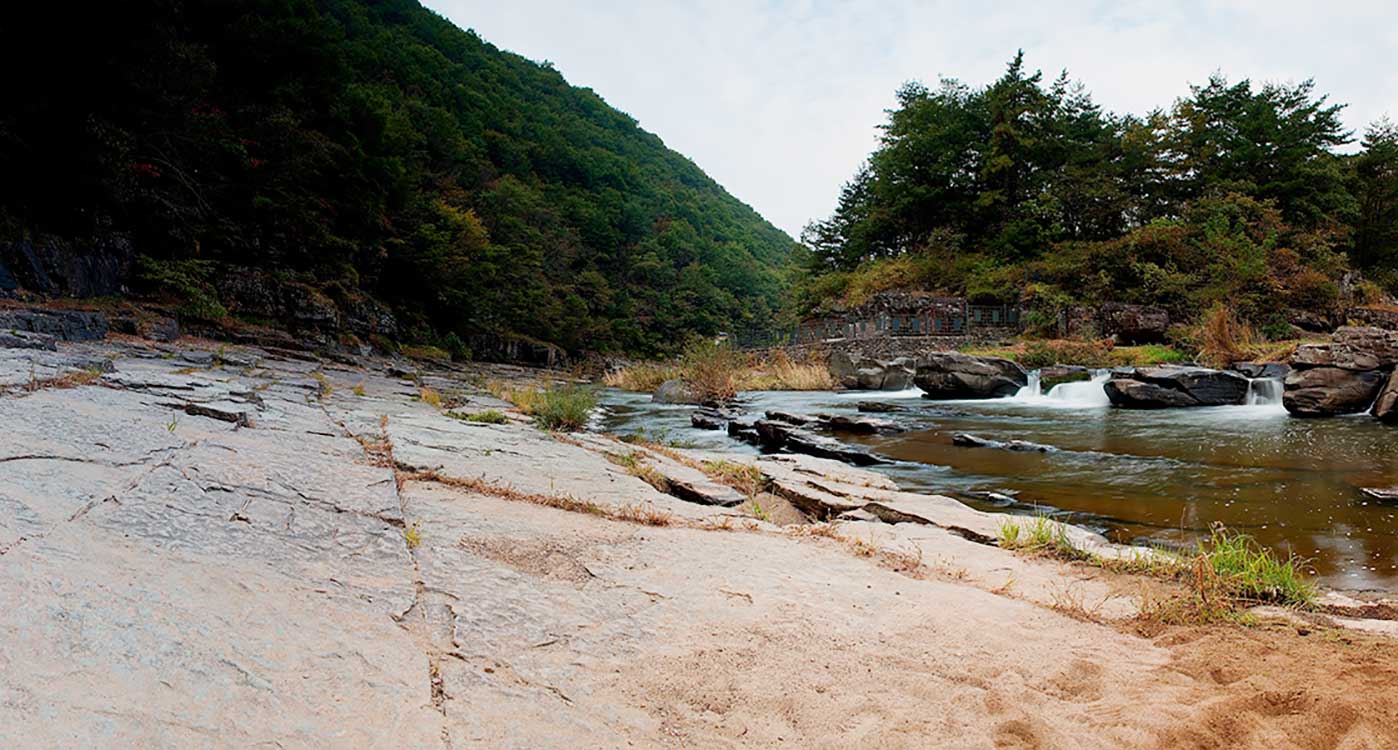
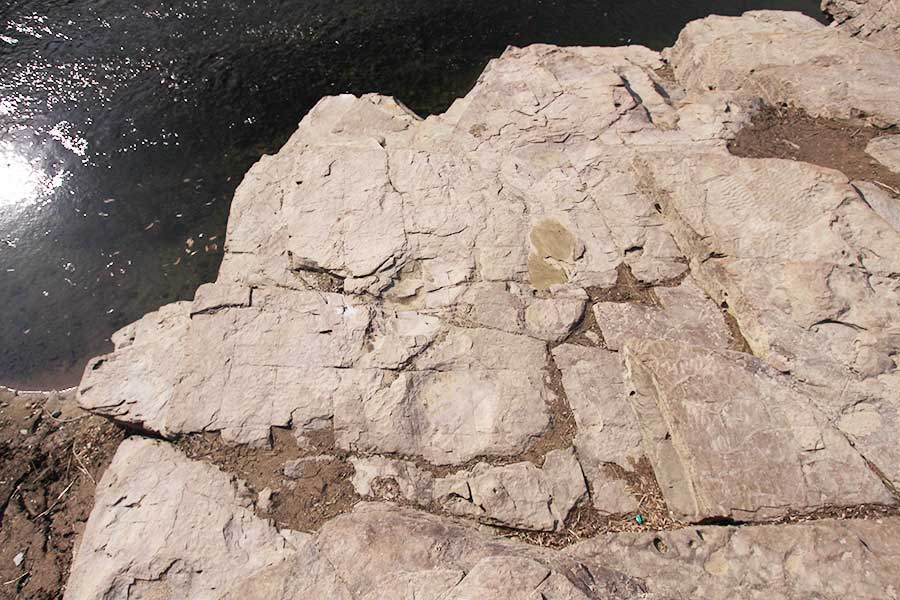
07. Dinosaur Footprint Fossils of Daegok-ri
Cultural Property Materials Number 13 in Ulsan (Designated in 11. 9. 2000) There are about eight dinosaur footprints left by Sauropoda and Ornithopoda, groups of herbivorous dinosaurs, on the edge of the river that leads to the Bangudae Petroglyphs. The strata are made of fine sand mudstone with small particles, and they belong to the Hayang Group of the Daegu Strata of the Cretaceous Gyeongsang Basin. Along with the dinosaurs’ tracks, sedimentary structures, such as mud cracks and ripples caused by waves and fossil records of invertebrates, are found. In particular, ripples of waves are well-marked depicting that the sedimentary structure developed from the flood plain near the river.
08. Novapes ulsanensis
The fossil footprints of an aquatic reptile, Choristodera, that became extinct in the Cenozoic (early Miocene), were reported after an academic survey and excavation around the Bangudae Petorglyphs (national treasure no. 285) in Daegok-ri, Ulju-gun on June, 2018. Eighteen footprints (average length of fore and hind footprints 2.94cm and 9.88cm, respectively) were found in one trackway. This new trackway is the first report in Asia and the second in the world. The newly discovered choristoderan footprints were named “Novapes ulsanensis” after the area of Ulsan where the fossil was found, which means “a new footprint found in Ulsan.” A choristoderan that left “Novapes ulsanensis” was estimated to be about 90 to 100cm. It had five digits in both hands and feet with a long tail. The webbing in pes (hindfoot) strongly supports that Choristodera was well adopted to the water. It was confirmed for the first time that Choristodera walked in a semi-upright gait like a crocodile, unlike dinosaurs and lizards (National Research Institute of Cultural Heritage 2020).
